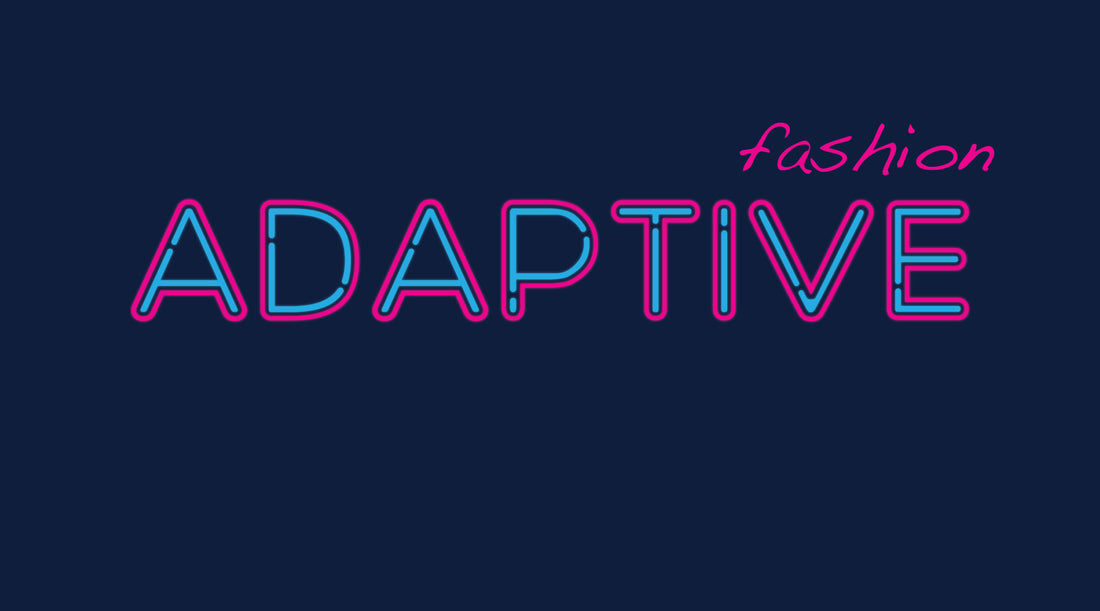As we bid farewell to scorching summer days and welcome the crisp embrace of autumn, it's time to explore the exciting innovations in the world of fashion. This blog post delves into two remarkable revolutions of Adaptive Fashion: the inclusive realm of adaptive fashion, offering stylish solutions to be body inclusive, size inclusive and customisable for people with disabilities and; cooling clothing designed to combat rising temperatures. Join us as we unravel the secrets behind changing fashion dynamics and staying cool and chic in the face of climate change.
Adaptive Fashion: Making Fashion Inclusive
Adaptive fashion is a rising star in the fashion industry, gaining traction for its commitment to inclusivity. It's all about creating clothing that caters to people with various needs, whether due to age, disability, or mobility limitations. The goal is to design clothing that is both stylish and practical, making it easy to put on, take off, and adjust.
This exciting movement gained recognition when more than 70 models with disabilities showcased adaptive clothing from renowned brands like Tommy Hilfiger, Adidas, and Victoria's Secret at New York Fashion Week. Organised by a charity group dedicated to adapting clothing to meet diverse consumers' needs, this event marked a significant stride towards inclusivity.
Key Trends in Adaptive Fashion
- Sustainable Materials: Adaptive fashion is embracing eco-friendly materials such as organic cotton, recycled polyester, bamboo, and natural fabrics. This shift not only supports sustainability but also reduces the need for excessive clothing production, minimising waste and conserving resources.
- Fashion Brands Join the Movement: Many fashion brands are launching adaptive clothing lines, recognising the importance of inclusivity. They are committed to creating clothing for all body types, sizes, and abilities. The emphasis is on comfort, functionality, and style, ensuring that everyone feels empowered and dignified when getting dressed.
- Technology and Customisation: Technology is revolutionising adaptive fashion with innovations like 3D printing, artificial intelligence, tracking systems, biometric sensors, and smart textiles. Brands like Silverts are pushing the boundaries to provide tailored solutions for consumers with diverse needs.
The Future of Adaptive Fashion
This movement extends beyond being a mere trend; it's a commitment to making fashion accessible and affordable to all. As the fashion industry continues to evolve and adapt, it's evident that inclusivity is no longer an option but a necessity.
As the Founder of Denim Star®, Emma Lucy Brown, I find it crucial to prioritise the fit and feel of Denim Star® socks against the skin, ensuring they are as soft as possible and akin to a second skin. The reason behind this emphasis is my personal experience with a skin condition known as 'Dermatographia.' Dermatographia is a condition characterised by raised, inflamed lines or welts that appear when the skin is lightly scratched. Fortunately, these marks typically disappear within 30 minutes. Dermatographia is also referred to as dermatographism and skin writing. For some individuals, such as myself, the condition manifests as severe itching, significantly impacting daily life. While medications like antihistamines can be used to manage symptoms, I prefer to avoid reliance on medication and minimise triggers as much as possible.
One of my major triggers is exposure to natural fibers like wool, which induces intense itching. Additionally, tight-fitted clothing and accessories, including socks with ribbed sock-tops, tend to dig into my skin, leaving deep welts that result in severe itching. In more extreme cases, failure to manage this situation can lead to 'Atopic Dermatitis,' causing a burning sensation. From personal experience this is really uncomfortable.
So, how did I address these challenges when it comes to socks? I implemented two solutions. Firstly, it was imperative to utilise a fiber that would not irritate the skin. To achieve this, I opted to work with sustainable GOTS certified organic cotton, known for its incredible softness and non-irritating properties. Secondly, every Denim Star® sock incorporates a HoneyComb Top, ensuring a secure fit without the discomfort of elastication digging into the skin. The unique structure of the HoneyComb Top effortlessly conforms to the natural contours of the leg, preventing the uncomfortable and itchy welts commonly associated with the tight-knitted rib sock-tops often found in other socks.
While I cannot classify these socks as medical socks, I can certainly attest that they are a mini miracle for me. And they really do akin to a second skin.
Watch to learn more about Denim Star® HoneyComb sock-tops
The Second Revolution of Adaptive Fashion. Cooling Clothing: Keeping It Cool
In an era where every summer seems to break temperature records, researchers are working tirelessly to develop effective cooling clothing. These innovative garments utilise non-electric cooling techniques such as ice, phase-change materials, and radiation cooling. Gone are the days when cooling clothing resembled bulky ice vests; today's options are sleek and technologically advanced.
Modern cooling clothing, like those from LifeLabs, incorporates infrared heat-blocking abilities to shield wearers from the sun's harmful rays. But what's truly exciting is the emergence of smart cooling clothing powered by electricity. As we grapple with persistently high temperatures, we can anticipate continuous improvements and developments in cooling garments and the fabrics used to craft them.
Choosing the Right Clothing for Heatwaves
As we experience increasingly severe heatwaves, selecting the right clothing becomes vital. While it's common to reach for light-colored garments during hot weather, the science behind staying cool is more nuanced.
Colour and Design: Light-coloured clothing reflects sunlight and heat, making white a popular choice. However, clothing fit and thickness play a significant role in heat retention. Loose-fitting clothing promotes airflow, while tight-fitting attire may trap heat.
Material Matters: Fabric choice matters when it comes to staying cool. Lightweight woven fabrics like cotton and silk are excellent for hot, dry conditions. They allow sweat to evaporate, keeping you comfortable. In humid climates, breathable materials like uncoated cotton, linen, nylon, and polyester work best. Avoid fabrics that retain moisture, like cotton on this occasion.
Innovations in Fabric Technology: Scientists are developing smart fabrics that maintain comfort in hot conditions. These fabrics are opaque to visible light, reflect sunlight, and promote heat dissipation. Some materials even change their structure to adapt to outside conditions, enhancing comfort.
Embracing the Power of Water: One of the simplest ways to stay cool in hot weather is by wearing wet clothes. Water evaporates by absorbing heat from your body, effectively lowering your temperature. While this may not always be practical, it's a natural way to beat the heat.
Conclusion
In a world where fashion and climate are constantly evolving, it's crucial to adapt and innovate. Adaptive Fashion and Cooling Clothing represent two remarkable shifts in the industry. As we make fashion more inclusive and explore new ways to stay cool in the face of rising temperatures, we're witnessing a transformation that goes beyond clothing—it's a statement of empowerment and a commitment to a better, more inclusive world. So whether seeking fashionable solutions for diverse needs or you're looking for ways to beat the heat, the world of fashion has exciting innovations waiting for you.

